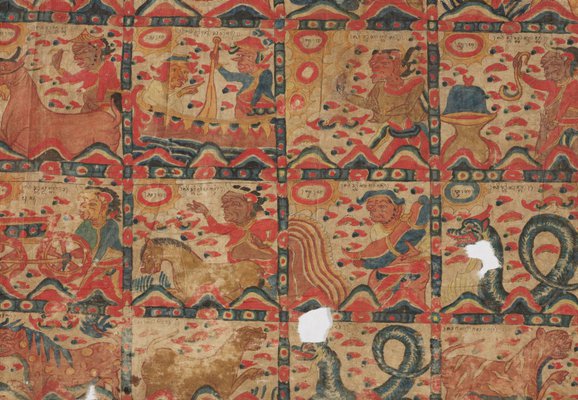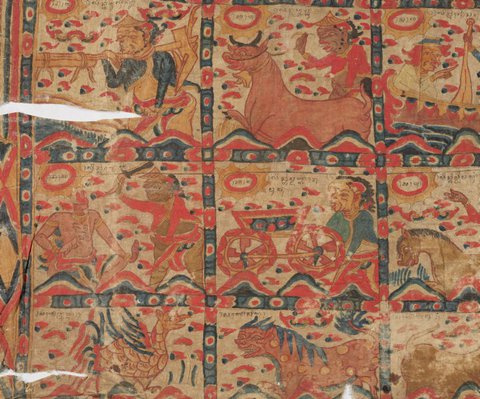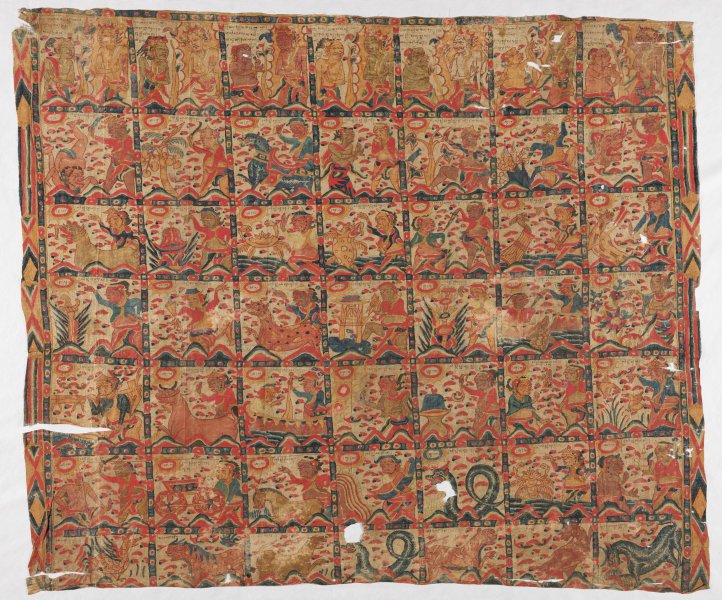




-
Details
- Other Title
- Astrological Calendar (for selecting auspicious days)
- Place where the work was made
-
Bali
→
Indonesia
- Date
- circa 1960
- Media category
- Painting
- Materials used
- pigment on cloth
- Dimensions
- 121.8 x 147.9 cm
- Signature & date
Not signed. Not dated.
- Credit
- Gift of Donald Friend 1972
- Location
- Not on display
- Accession number
- 60.1972
- Copyright
- Share
-
-
About
The Balinese calendar integrates the Indian-derived lunar (saka) calendar with an indigenous system of weekly cycles (wuku) which constitute a 210-day year made up of different sequences of named days. The 210-day year consists of 30 seven-day weeks, each with its own name. Running concurrently with the seven-day weeks are a set of other ‘weeks’ of varying numbers of days. The five and seven-day weeks are the most important, because together they produce the 35 day month (tumpek) which is an important period of prognostication, particularly with regard to the date of birth. The tumpek is the most frequently painted calendar and is known as palelintangan, after lintang, the constellations. Each of the 35 cells have a constellation name at the top left and the calendar covers every combination of the five and seven-day weeks. The seven days are vertical columns with the God, wayang figure, bird and tree appropriate to that day at the top and the animal and demonic figures (buta) at the bottom. Each day of the five-day week is a horizontal row, and as both weeks run at the same time the days succeed one another diagonally.
Asian Art Department, AGNSW, May 2014
-
Places
Where the work was made
Bali
